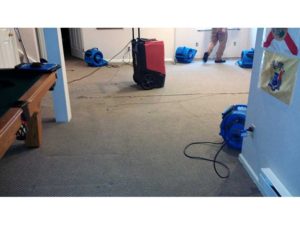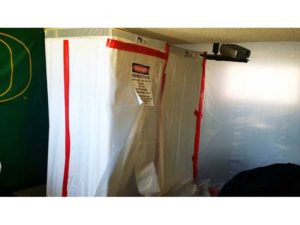 It is a fact that our home appliances don’t last forever. Water heaters and water damage can be disastrous. At Project X Restoration in Denver, we want to let you know how to spot any potential issues and what to do if you have an emergency.
It is a fact that our home appliances don’t last forever. Water heaters and water damage can be disastrous. At Project X Restoration in Denver, we want to let you know how to spot any potential issues and what to do if you have an emergency.
Water Damage
The typical water heater has a lifespan of 10 years on average. Many water heaters degrade over time and what frequently happens is that the connections where the water comes in and goes out are easy to miss. This means the leak can do large amounts of damage over time. The moisture can saturate the drywall and wick away to a much larger area. It can create an ideal environment for mold growth.
Mold can develop in warm wet spaces very quickly and unfortunately the longer the problem goes unnoticed, the larger the damage and destruction can be. In some houses, the water heater is not even visible and is tucked in a rarely trafficked area or may be surrounded by boxes and storage.
Damage Spreading
The water damage can spread to adjoining areas. If your water heater shares a wall with your kitchen cabinets, your cabinets could be soaking up the leaking water and be on the way to ruin. Entire walls can end up being ruined by a small slow leak.
On the other end of the damage spectrum is a water heater failure due to a tank rupture. If you’ve ever dropped a gallon of milk and watched it spill across the floor, you may have a small scale visual. Just expand it to 40 or 50 gallons and imagine the damage. One water heater housed in the middle of the home can actually flood an entire house with an inch or 2 of water. When it comes to water heaters and water damage, this is your worst case scenario.
Preventing Damage
The primary thing you can do to avoid problems is to inspect your water heater regularly. Be sure to check for moisture around the connections and look for any pooling water or mold. If you find any signs of trouble, you are going to need to have your water heater repaired or replaced. You are also going to need to have any damaged areas repaired and have mold mitigated. Call a service such as Project X Restoration in Denver for help.
If you are renovating, you may consider moving your water heater to an area where there is less possibility of damage, such as your garage. Also, consider installing a metal stand for water heaters. These stands have water trays that help alert you to a leak before it gets far.
Worst Case Scenario
If your water heater suddenly bursts, contact a water damage and restoration expert. They can remove large amounts of water quickly and help you get your home back to normal. They can also help with mold mitigation and make recommendations on needed repairs and recommend additional contractors to use if needed.
If you have problems with water heaters and water damage, contact us here at Project X Restoration in Denver. We are water damage restoration experts and even provide mold removal and remediation if you need it. Call us 24/7 for professional, emergency response.
